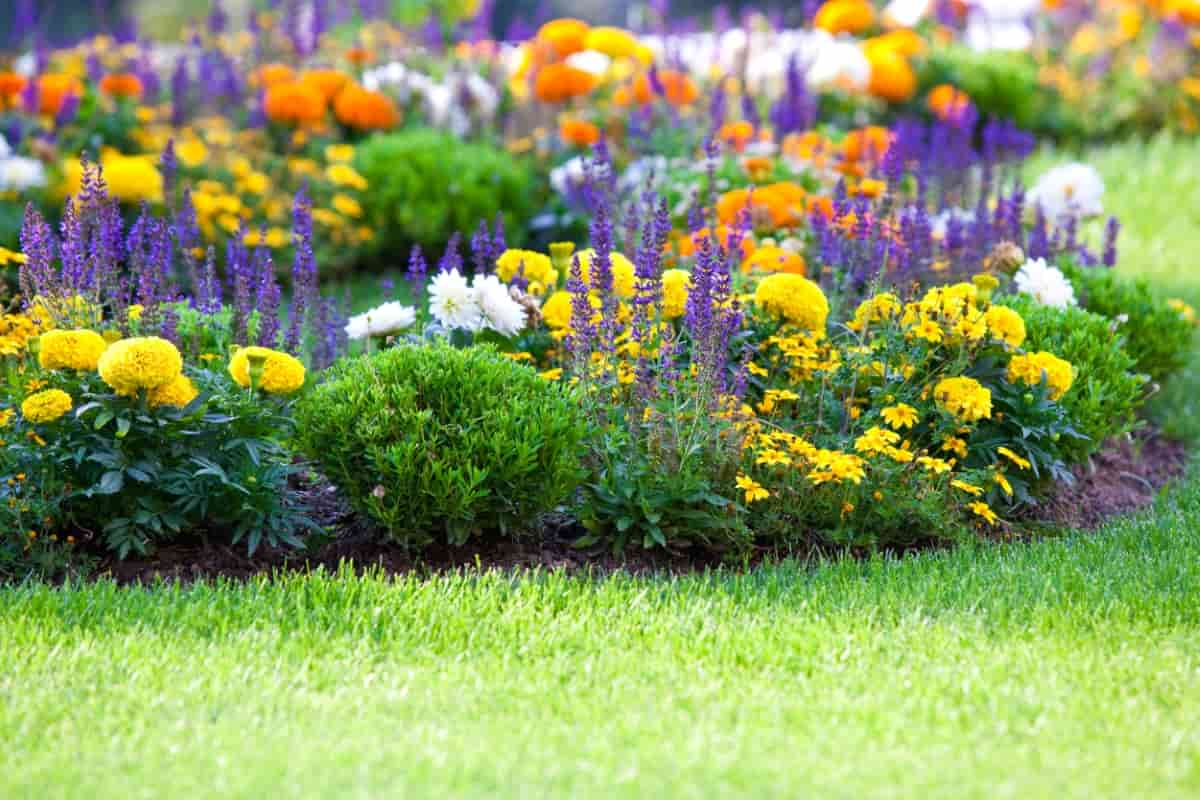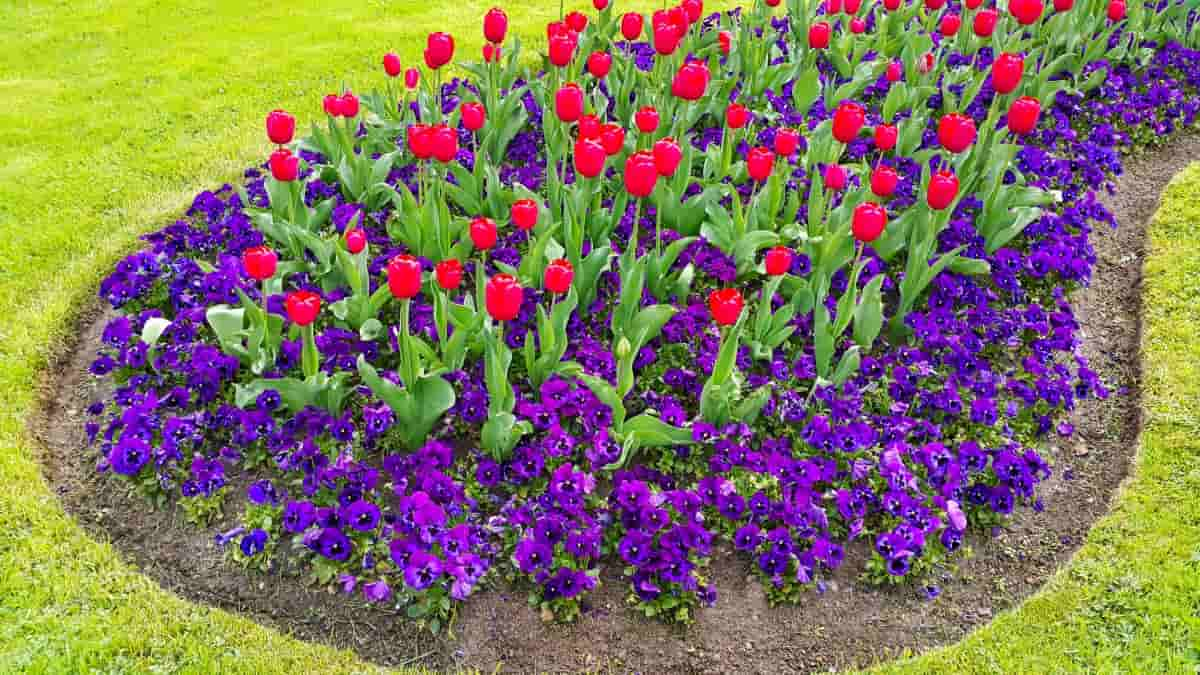Flower garden design involves blending different plant varieties, colors, textures, and heights to make an aesthetically pleasing composition. Creating a well-thought-out flower garden design is essential for maximizing the beauty of your space. It allows you to express creativity, showcase your favorite blooms, and create a personalized oasis right in your backyard.

Fundamentals of Flower Garden Layout
The fundamentals of flower garden layout involve considering factors like sunlight exposure, soil quality, and plant height. Begin by sketching out your garden design on paper, taking into account any existing structures or trees that may impact the layout. Consider the bloom times of your chosen flowers to ensure a display of color throughout the seasons. Group plants with water and sunlight needs together for easier maintenance. Experiment with different arrangements until you find one that suits your style and vision for your flower garden.
Seasonal Color Strategies
When designing your flower garden, consider using seasonal color strategies to keep it vibrant and visually appealing year-round. Incorporate a mix of plants that bloom at different times throughout the seasons. Choose flowers that bloom in spring, summer, fall, and even winter to ensure there is always something colorful in your garden. For spring, opt for bulbs like Tulips and Daffodils that burst with bright hues. Summer calls for cheerful blooms like Sunflowers and Zinnias to bring warmth to your garden. Transition into fall with rich tones of marigolds and asters.
Vertical Gardening with Climbers
Vertical gardening with climbers is a fantastic way to add depth to your flower garden design. By using vertical space, create a lush green backdrop for your blooming flowers. Climbers like morning glories or sweet peas can add beauty to any garden setting.
In case you missed it: DIY Succulent Garden Designs for Limited Space

These climbing plants not only provide visual interest but also help maximize limited space in smaller gardens. You can train plants to grow up arbors, trellises, or even along fences to create stunning vertical displays. Their upward growth habit adds a dynamic element to the overall layout of your garden.
Incorporating Water Features
Water features can add tranquility and elegance to your flower garden design. Consider incorporating a small fountain, pond, or birdbath into your garden layout. These features not only attract birds but also provide a focal point that enhances the overall aesthetic appeal. Water features’ reflections can add depth and visual interest to your garden space. This element adds another dimension to your floral displays, creating a dynamic and captivating environment.
Choose water feature designs that complement the style of your flowers and plants. Whether you prefer a modern look with sleek lines or a more natural feel with rocks and cascading water, there are endless possibilities to suit your taste. Regular cleaning will ensure that your garden remains beautiful and inviting year-round.
Pathways and Walkways Design
When designing your flower garden layout, don’t forget about pathways and walkways. These elements add functionality and also enhance the overall aesthetic appeal of your garden. Consider using materials like gravel, stone pavers, or even wood to create paths that complement your flower beds.
Curved pathways can add a sense of whimsy and intrigue to your garden space, while straight paths offer a more structured look. Mix it up depending on the style you want to achieve. Pathways are not just practical; they can be an integral part of the beauty of your flower garden.
Mixing Perennials and Annuals
Perennials are beautiful plants that come back year after year, while annuals bring vibrant colors and blooms for just one season. The combination of these two types of plants creates a dynamic landscape that changes throughout the year. By incorporating a mix of perennials and annuals in your garden layout, you can enjoy continuous color from spring to fall.
In case you missed it: Terrace Gardening Design and Best Terrace Gardening Plant Ideas

Perennials’ consistent growth provides a solid foundation, while annual’ seasonal pops of color keep things interesting. Pairing tall perennials with low-growing annuals can create depth and visual interest in your flower beds. With some creativity, you can achieve a harmonious balance between these two plant types in your flower garden design.
Shade Garden Considerations
When creating a flower garden in a shaded area, it’s essential to choose plants that thrive in low-light conditions. Shade-loving plants like hostas, ferns, and astilbes can add color to your garden while flourishing in the lack of direct sunlight. Consider the different levels of shade in your garden—from dappled light under trees to dense shade near buildings or walls.
Matching the right plants with varying degrees of shade will ensure a harmonious and thriving garden. Don’t forget about incorporating elements like decorative rocks, statues, or unique planters into your shaded garden design.
Sun-Loving Flower Beds
When designing these beds, consider plants like marigolds, petunias, and zinnias that thrive in full sunlight. Ensure your sun-loving flower bed receives 6-8 hours of sunlight daily for optimal growth. Good drainage is essential too; make sure the soil is well-draining to prevent waterlogged roots. Tall blooms like sunflowers can be complemented by mid-sized flowers such as daisies or salvias, creating a dynamic and eye-catching display.
Sustainable Gardening Techniques
Sustainable gardening techniques are essential for creating a flower garden that thrives in harmony with the environment. The main technique is to use organic fertilizers and compost to nourish the soil naturally, reducing the need for synthetic chemicals. Another method is to practice water conservation by utilizing rain barrels or drip irrigation systems to water your plants efficiently.
In case you missed it: Cottage Garden Ideas on a Budget: Design Tips and Guide

Choosing native plants that are well-suited to your region can help reduce the need for excessive watering and pesticides. Implementing companion planting strategies can also promote natural pest control and enhance plant growth without resorting to harmful chemicals. Additionally, attracting beneficial insects like ladybugs and bees can help maintain an ecosystem within your garden.
Creating Focal Points with Flower Beds
When designing a flower garden, creating focal points with flower beds can enhance the overall aesthetic appeal of your outdoor space. Placing a striking combination of colors and textures in key areas of your garden draws the eye and adds visual interest. Consider incorporating tall flowering plants like delphiniums or foxgloves at the back of a bed to create height and drama.
Pair them with lower-growing varieties such as petunias or marigolds in front for contrast. Grouping flowers with varying bloom times can ensure that there is always something in bloom throughout the season, keeping your focal points looking fresh and vibrant. Making a flower garden can be a rewarding and enjoyable experience for beginners.
- How to Grow Hibiscus from Flower
- Plantation Ideas for Home Decoration: A Beginners Guide
- Flower Garden Designs and Layouts for Beginners
- Planting and Spacing Techniques in Papaya: A Beginner’s Guide
- Growing Gold: Essential Techniques for Planting Pineapples
- How to Make Kalanchoe Plant Bushy: Home Remedies and Solutions
- 11 Reasons Why Your Gardenia is Not Blooming: Home Remedies and Solutions
- Eco Elegance: The Guide to Designing a Drought-Tolerant Landscape
- Gardening on a Slope: Strategies for Hillside Landscaping